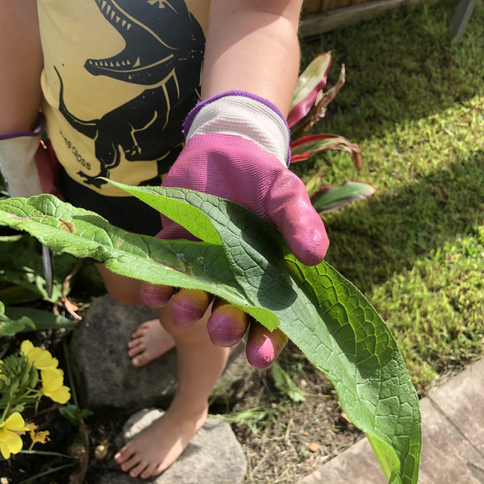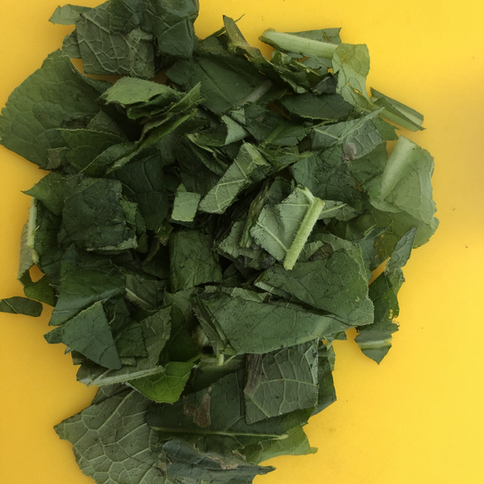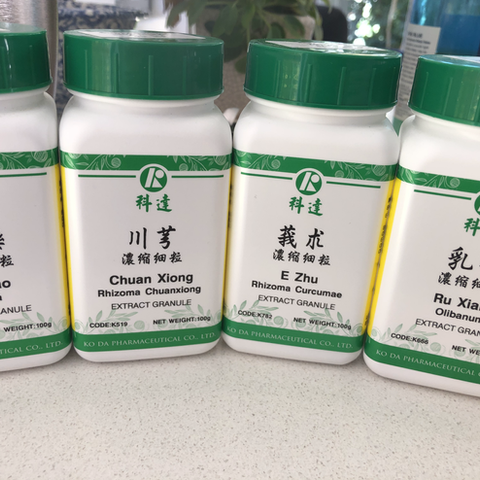One of the great things about being a herbalist and growing your own herbs is you’re always at the ready! A recent broken toe in the house (not mine) required some harvesting of comfrey to make a poultice. My faithful trainee herbalist (my 7 year old daughter) helped!
The origins of the word comfrey is to mean ‘come together’, as it has been used for eons to aid in the repair of broken bones thanks to its content of allantoin. It's this component that has been shown to aid with granulation and cell formation which is what we want for healing.
Comfrey does have small prickles on the plant, which although harmless might feel uncomfortable to touch so best to wear gloves. After harvesting the comfrey (I use leaves and some stems) I wash and dry it thoroughly to ensure any friendly critters from the garden have been removed. It's important to ensure it's dried well as any water in the final poultice will reduce it's shelf-life. Then I roughly chop the leaves & stems ready to put in a blender or food processor.
In this poultice I also added extracts of myrrh (mo yao), frankincense (ru xiang), curcumin (e zhu) and ligusticum (chuan xiong). Each of these herbs aid with reducing inflammation and improving circulation. To make the paste, the mixture needs some oil. I use cold pressed organic sesame oil which is very high in linoleic acid (omega-6), which not only is good for healing, but will help with extraction of the allantoin from the comfrey. You could also use canola oil or avocado oil. Olive oil is too heavy and viscous and can make a poultice sticky. It's a fine balance of adding enough oil to get a consistency that is easily spread onto the area without running off. If your poultice is too thin, you can add more raw herb, or a sprinkle of corn-flour.

Once made, it can be applied to the area (in this case the broken 5th toe). There's no denying it can be a messy affair, so have an old towel spread out, some glad wrap at the ready and paper towel for catching any dribbles. Use some sports tape to seal up edges and leave it in place for at least one hour, daily for at least 7 days or for as long as you have the patience. Feet and ankle are tricky to keep on for a length of time as you will eventually need to get to the loo! But I've done this poultice for patients with shoulder, elbow, wrist and hand injuries, really any time of sprain, strain or closed break (that is no broken skin) will benefit. The poultice will keep in the fridge for about 5 days. If you notice mould growing on it, you need to discard it. This might be caused by not drying the herb properly and excess water getting in.

Healing poultice formulas and methods have been passed down from ancient times to today's modern practitioners. You may have what you need in the garden already!












